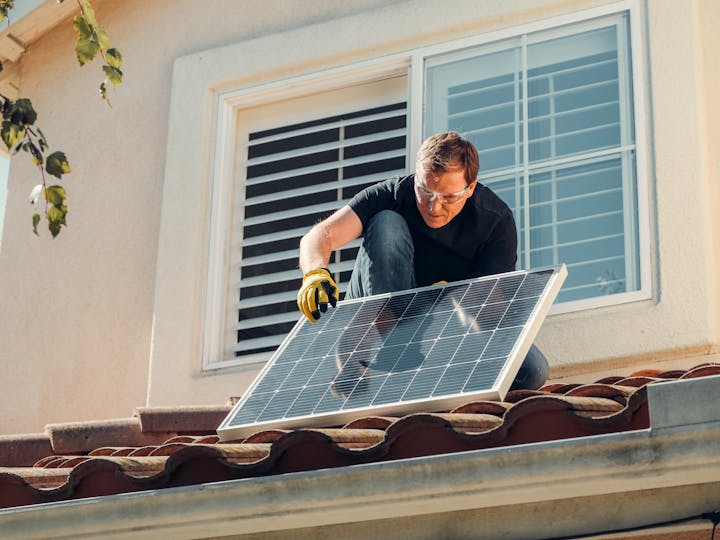If you’re thinking about buying a portable power station, the specifications can get confusing. There are numbers like watt-hours, inverters, solar input watts, and more. Sometimes it feels like you need a degree just to understand what you’re buying.
But don’t worry! This simple guide will help you understand the important specs of portable power stations so you can make a smart decision. We will explain what watt-hours are, why inverters matter, and how solar input affects charging. Whether you’re planning outdoor adventures or need backup power at home, choosing the right power station requires understanding these key specifications. Let’s get smart.
What Are Watt-Hours (Wh), and Why Do They Matter?
Think of watt-hours like the size of a gas tank in a car. The bigger the tank, the longer you can drive before needing to refill. In portable power stations, watt-hours (Wh) tell you how much energy the battery can store.
For example, if a power station has 500Wh, it means it can supply 500 watts for one hour, or 50 watts for 10 hours, and so on.
To calculate watt-hours,
Watt-hours = Voltage * Ampere-hours (Ah)
Don’t worry, you don’t have to do the math. The important thing to remember is that a higher Wh number means more stored power and longer run times for your devices.
Continuous vs Peak Wattage: What Does the Inverter Do?
Portable power stations store power as DC (direct current), but most devices, like your laptop or fridge, use AC (alternating current). The inverter inside the power station changes DC to AC so your devices can work.
There are two wattage numbers to know here:
- Continuous wattage is the amount of power the inverter can provide steadily over time. For example, if the continuous wattage is 300W, the station can safely power devices using up to 300 watts without problems.
- Peak wattage refers to the fact that some devices need extra power when they start up, like a fridge or a power tool. The peak wattage is the maximum power the inverter can handle for a short time. For example, a peak wattage of 600W means the inverter can handle sudden spikes up to 600 watts.
Solar Input: Why It’s Important for Charging Speed
Many portable power stations can be recharged with solar panels. But the speed and efficiency depend on the station’s solar input rating and the type of solar panels used.
Solar Input Rating (watts) tells you the maximum solar power the station can accept to charge. If the solar input rating is 200W, connecting panels that produce more than 200 watts won’t speed up charging. Solar connectors are another consideration because different power stations use different connectors like MC4, XT60, or Anderson ports. Make sure your solar panel cables match and you have the right adapters.
Solar panels don’t always produce their full rated power. Clouds, shade, and the angle of the sun affect output. So if you have a 200W panel, it might only give you 150W on a cloudy day.
Understanding Battery Technology and Safety
When choosing a power station, battery type matters significantly for both performance and safety. Lithium iron phosphate (LiFePO4) batteries last longer and are safer but can be more expensive. Other battery types may degrade faster over time. According to the U.S. Department of Energy, lithium-ion battery technology has improved dramatically in recent years, with LiFePO4 batteries offering superior thermal stability and longer cycle life compared to traditional lithium-ion alternatives.
How to Choose Based on Your Use Case
Your needs will decide which specs matter the most. For camping or short trips, a smaller battery around 300-500 Wh and a moderate continuous wattage of 200-300W can be enough. For home backup, you might want a bigger battery (1000Wh or more) and higher continuous wattage (500W+), especially if you want to power appliances. For remote work, look for a good balance, enough battery to run essentials, a strong inverter for tools, and solar input that matches your panel setup.
Quick Tips for Smart Shopping
- Calculate how much power your devices can use. You can find this information on device labels or manuals. Add it up to know the watt-hours you will need.
- Don’t just look at battery size; check inverter wattage to ensure devices run smoothly.
- If you plan to use solar charging, match your panel wattage with the station’s solar input rating.
Consider the weight and portability if you plan to carry the unit frequently. Check for additional features like USB ports, wireless charging, and display screens that show real-time power consumption.
Conclusion
Understanding watt-hours, inverters, and solar input helps you choose the right portable power station. It’s not just about flashy features but about matching the specs to what you actually want to power. Next time you shop, use this simple guide to avoid confusion and pick a reliable power station that meets your specific needs and budget requirements.


